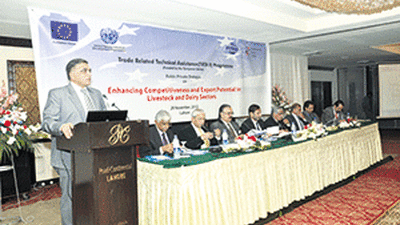New Forces of Economic Growth
The new dynamism and forces of economic growth in developing countries are in contrast to the low growth rates and uncertainty being felt in developed countries. While it is not possible to anticipate whether the pace of growth in the South will outpace the impact of depressed conditions in traditional markets, the appropriate balance between domestic and export growth, the roles of regional integration and how to enhance the value-added components of South–South trading agreements need to be addressed.
The world economy is changing fundamentally to the point where it would not be an exaggeration to say that the tectonic plates of the world economy are in motion. Over a prolonged period, and sometimes violently, new heights are being created and former heights are in retreat. Rapid gains are being achieved in parts of the developing world, led by China, but also involving India, South-East Asia and Brazil. Africa, including South Africa, form part of that trend, demonstrating a new dynamism which is propelling economic growth.
In contrast to this picture there has been sluggishness in the advanced developed countries. Rates of growth are low, recoveries far from certain and analysts are expecting this trend to persist for as much as the next decade. This has demonstrable consequences for patterns of global trade. In South Africa’s case, during the 2009 recession, exports to the European Union and the United States declined in the vicinity of 30% while exports to China and India grew, partially offsetting lower exports to the developed world. This experience is consistent with a broader trend in African trade.
In addition to overall sluggishness in the developed world, there are also diminishing prospects for credit-funded consumer growth. At the same time, a country like China is aiming for a better balance between domestic and external market growth. This is taking place against a background of rising wages and a more finely tuned import policy, representing major ongoing change. Growth in trade between developing countries, particularly advanced developing countries, is likely to increase.
Although it can be expected that there will be positive developments conducive to increasing demand for imports from developing countries other than China, it may be insufficient to offset the weakened demand from the developed world. This raises the question of trade volume versus value.
The Cambridge-based economist Gabriel Palmer has used the analogy, in terms of the varying performance of different countries and where the high potential gains in trade are to be found, of flying geese and waddling ducks. Or to take another example, does it really matter if a country exports computer chips or potato chips? It does. It makes a fundamental difference in terms of the impact on growth prospects. Prospects for volume increases need to be thought of in more modest terms than they were before, while the issue of value and competition in trade becomes much more significant.
To take the example of China, what is the balance between domestic market growth and export growth? It is more complex than just a case of export is good, domestic is bad. The other related issue is regional integration. This is the critical issue for African countries. A grand free trade agreement between the Southern African Development Community, the common market between eastern and southern Africa and the East African community is an exciting opportunity. When in place, it will represent a free trade area literally from Cape to Cairo on the east coast of Africa with a combined population of 700 million people. However barriers to inter-regional trade can inhibit growth. Some of the barriers include infrastructure and factors to do with the production capacities of the many countries producing the same sort of export commodities for export. There are also gaps in import replacement industries. The needremains to restructure production capacities and to put in place the infrastructures that are going to support a volume of value-added, quality trade.
In South Africa’s case, when approaching South–South issues it is devoting trade diplomacy resources to enhancing the value-added component of its trade. For example, during a recent state visit to China, a comprehensive strategic partnership agreement was signed aiming to achieve cooperative efforts to increase the proportion of value-added products in the trade basket. China says it is committed to working with African countries to invest in the production of new products. The challenges remain to grow South–South trade, to enhance the quality of trade and to bring regional integration into the picture.
This article is an edited version of Mr Davies’ presentation at the 2010 World Export Development Forum.





